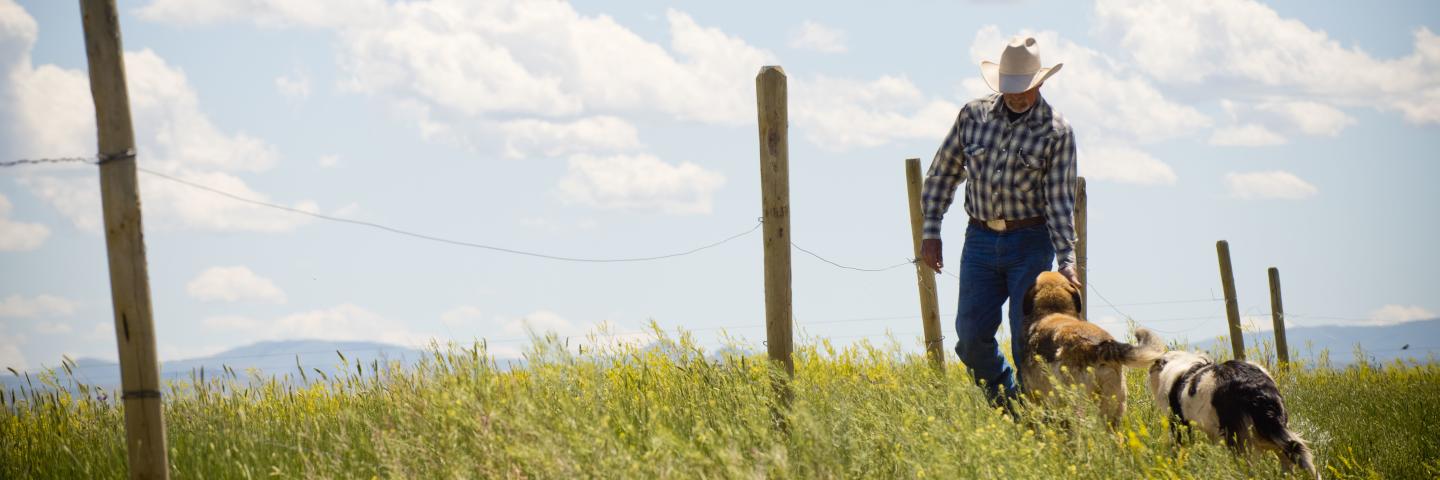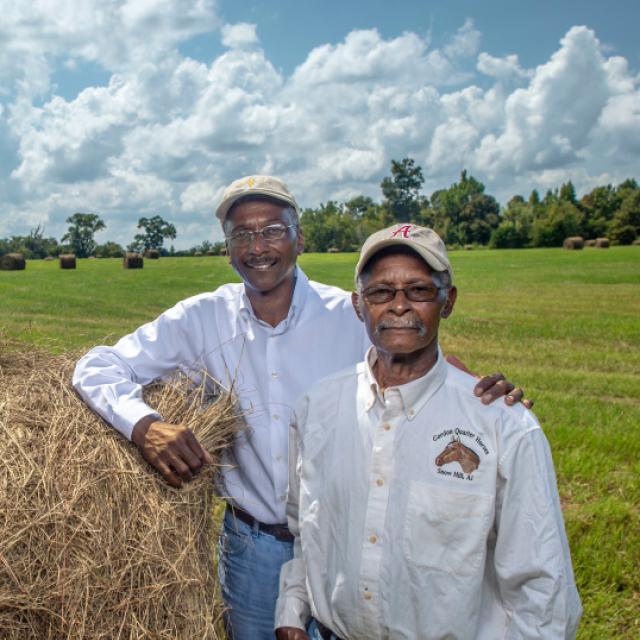
This Targeted Implementation Plan (TIP) is available in Park County, Montana. TIPs are local-level Environmental Quality Incentives Program (EQIP) initiatives used by NRCS in Montana to guide on-the-ground implementation of locally developed Long Range County Plans.
Project Description
County or Counties: Park
Primary Resource Concern: Mitigation of wildfire hazard from biomass accumulation
Time Frame: Fiscal Year (FY) 2024 through FY 2026
FY 2025 Amendment: FY 2024 through FY 2028
The primary goal of this TIP is to address restoration and long-term preservation of plant community structures and mitigation of wildfire hazard from biomass accumulation. This TIP is intended to be a first step towards reducing fires surrounding the 2001 Fridley Fire burn scar.
FY 2025 Amendments
Modification of TIP Duration
The duration of the TIP is presently FY24 through FY26. This modification proposes to extend the duration of the TIP through FY28, for a total program signup lifespan of 5 years instead of 3. The amount of funding requested will not increase. The funds remaining, after FY24 contract obligations, of the previously approved $4.5 million will be allocated equally across the next 4 years.
Modification of Eligible Practices
All the currently eligible practices will continue to be included in the TIP. This modification proposes to add the following to the list of practices eligible for financial assistance:
• Access Road (CPS 560) – establishment of permanent ingress/egress to improve accessibility for wildland-urban interface fire response.
• Forest Trails and Landings (CPS 655) – establishment of temporary infrastructure to facilitate access during fuels reduction activities and staging of slash.
• Tree-Shrub Pruning (CPS 660) – reduction of ladder fuels to mitigate crown-to-crown spread of fire.
• Herbaceous Weed Treatment (CPS 315) – control of annual invasives post ground-disturbing fuels reduction activities to assist with recovery of the herbaceous plant community post conifer removal. It is uncertain that the Park CWMA will be able to secure a grant for financial assistance with follow-up weed treatment as previously expected.
• Forage and Biomass Planting / Range Planting (CPS 512 / CPS 550) – establishment of desirable introduced / native species in key areas to assist with recovery of the herbaceous plant community post conifer removal.
Conservation Practices Offered
- 666 Forest Stand Improvement
- 314 Brush Management
- 383 Fuel Break
- 384 Woody Residue Treatment
- 315 Herbaceous Weed Treatment
- 528 Prescribed Grazing
- 382 Fence
- 614 Watering Facility
- 516 Livestock Pipeline
- 574 Spring Development
- 642 Water Well
- 533 Pumping Plant
FY 2025 Amendment:
- 560 Access Road
- 655 Forest Trails and Landings
- 660 Tree-Shrub Pruning
- 315 Herbaceous Weed Treatment
- 512 Forage and Biomass Planting
- 550 Range Planting
Detailed descriptions of these practices can be found in the Field Office Technical Guide Section 4- Practice Standards and Supporting Documents.
Project Partners
- Upper Yellowstone Watershed Group
- Park County's Cooperative Weed Management Area
- Park Conservation District
- Park County Environmental Council
- Montana Department of Natural Resources
- National Wild Turkey Federation
- United States Forest Service
When to Apply
Program applications are accepted on a continual basis. However, NRCS establishes application ranking dates for evaluation, ranking and approval of eligible applications. Applications received after the ranking date will be automatically deferred to the next funding period. See Montana Programs and Application Dates.
Applications must meet the intent of this initiative. For more details about this initiative, contact your local field office.
Local Ranking Questions
NRCS uses these questions to evaluate eligible applications for this project and to prioritize applications for potential funding.
1. Are the acres proposed for treatment in proximity to any previous forest thinning, fuels
reduction, or conifer encroachment treatment projects that have been completed in the last
5 years?
a) Project area is 1,000 feet or less from previously treated acres
b) Project area is between 1,000 and 2,000 feet from previously treated acres
c) Project area is greater than 2,000 feet from previously treated acres
2. Are the acres proposed for treatment in proximity to a priority area (designated by the State
of Montana, Bureau of Land Management, or US Forest Service) where the opportunity for
partner assistance would enhance practices in the application?
a) Project area is within a priority area boundary
b) Project area is within 2 miles of a priority area
c) Project area is greater than 2 miles from a priority area
3. Are the acres proposed for treatment in proximity to primary ingress/egress routes (state
highways, or county roads – paved or unpaved – that would be critical to residents or first
responders in the event of wildfire? Or are the acres proposed for treatment in proximity to
residential structures?
a) Project area is 1,000 feet or less critical infrastructure
b) Project area is between 1,000 and 2,000 feet from critical infrastructure
c) Project area is greater than 2,000 feet from critical infrastructure
4. What extent of treatable acres identified in the project area will the program participant
address with Brush Management (314) and/or Forest Stand Improvement (666)?
a) Greater than 75%
b) Between 50% and 75%
c) Less than 50%
Additional Montana Information
Targeted Implementation Plans (TIPs) are local-level Environmental Quality Incentives Program (EQIP) initiatives used by NRCS in Montana to guide on-the-ground implementation of locally developed Long Range County Plans. These plans are part of the "Focused Conservation” strategy to guide Montana's EQIP investments. Learn more about Montana Focused Conservation and Targeted Implementation Plans
Montana Payment Schedules
Montana Priority Resource Concerns
Montana Programs and Application Dates
Environmental Quality Incentives Program - Montana
What's Available in My County?
Additional Information
Apply for Environmental Quality Incentives Program (EQIP)
The Environmental Quality Incentives Program (EQIP) provides financial and technical assistance to agricultural producers and non-industrial forest managers.
Learn MoreFarm Bill
The 2018 Farm Bill was enacted on December 20, 2018. The Farm Bill continues its strong support for conservation efforts of America’s farmers and ranchers through reauthorization and expanded flexibility of NRCS conservation programs.
Learn MoreReady to get started?
Contact your local service center to start your application.
How to Get Assistance
Do you farm or ranch and want to make improvements to the land that you own or lease?
Natural Resources Conservation Service offers technical and financial assistance to help farmers, ranchers and forest landowners.

To get started with NRCS, we recommend you stop by your local NRCS field office. We’ll discuss your vision for your land.
NRCS provides landowners with free technical assistance, or advice, for their land. Common technical assistance includes: resource assessment, practice design and resource monitoring. Your conservation planner will help you determine if financial assistance is right for you.
We’ll walk you through the application process. To get started on applying for financial assistance, we’ll work with you:
- To fill out an AD 1026, which ensures a conservation plan is in place before lands with highly erodible soils are farmed. It also ensures that identified wetland areas are protected.
- To meet other eligibility certifications.
Once complete, we’ll work with you on the application, or CPA 1200.
Applications for most programs are accepted on a continuous basis, but they’re considered for funding in different ranking periods. Be sure to ask your local NRCS district conservationist about the deadline for the ranking period to ensure you turn in your application in time.
As part of the application process, we’ll check to see if you are eligible. To do this, you’ll need to bring:
- An official tax ID (Social Security number or an employer ID)
- A property deed or lease agreement to show you have control of the property; and
- A farm number.
If you don’t have a farm number, you can get one from USDA’s Farm Service Agency. Typically, the local FSA office is located in the same building as the local NRCS office. You only need a farm number if you’re interested in financial assistance.
NRCS will take a look at the applications and rank them according to local resource concerns, the amount of conservation benefits the work will provide and the needs of applicants. View Application Ranking Dates by State.
If you’re selected, you can choose whether to sign the contract for the work to be done.
Once you sign the contract, you’ll be provided standards and specifications for completing the practice or practices, and then you will have a specified amount of time to implement. Once the work is implemented and inspected, you’ll be paid the rate of compensation for the work if it meets NRCS standards and specifications.

